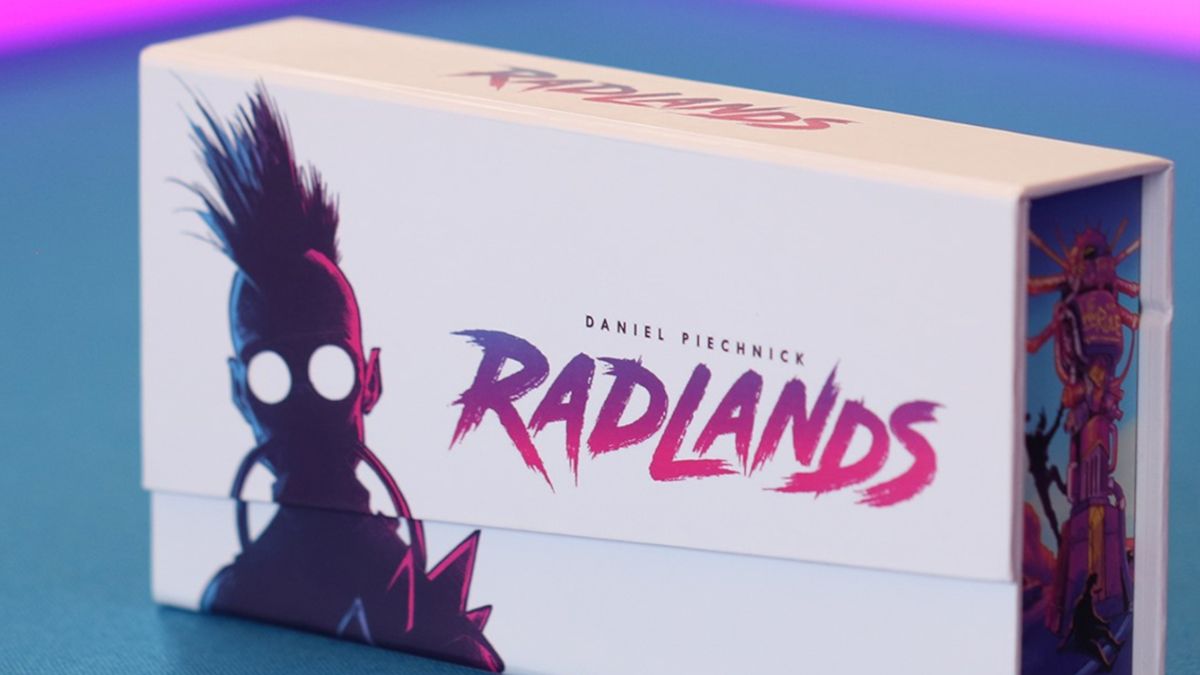12DOVE Verdict
Radlands delivers the goods with considerable style - it conjures both a convincing theme and a tense, tactical battle while remaining fast and accessible.
Pros
- +
Ever-shifting tactical puzzle of defence and counterattack
- +
Distinctive look and feel married to a good sense of theme
- +
Fast-playing and easy to learn
Cons
- -
Sometimes comes to a frustrating close as a player simply runs out of options
Why you can trust 12DOVE
Radlands occupies an unusual space. While games featuring leather-clad barbarians or futuristic starships abound, there’s a strange gap in the devastating disconnect between the two. There's plenty of post-apocalyptic media, but it just doesn’t seem to have made the same inroads with the best board games.
Enter Radlands, a two-player card game with lurid cartoon art that takes clear inspiration from all that apocalyptic media that we just mentioned. It’s cheap, fast-playing, and smug with style. But while it might lack competition in the genre stakes, quality head-to-head card battlers are common amongst the best card games. Its looks make it stand out, but we’re here to talk about whether its gameplay can do the same.
What is it, and how does it work?

- Game type: Duelling card game
- Players: 2
- Difficulty: Moderate
- Lasts: 20+ mins
- Ages: 14+
- Price: $25 / £39.95
- Play if you enjoy: Magic: The Gathering, Here to Slay
Radlands is essentially two decks of cards. The smaller one contains camp cards, of which you get three at the start of the game. They represent buildings, structures and installations that make up your home base and which you have to defend from your opposing player, while you attempt to destroy theirs to win. These cards range from the symbolic, such as the Totem, to the utilitarian, like the Watchtower, to gruesomely hilarious weapons like the Catapult.
The other deck consists mostly of people with a smattering of events. This is the central pool from which both players will draw during the game. People get played in front of your camp cards in two rows, with cards in front protecting cards behind from damage. Events, meanwhile, go in a queue that inches up each turn until they get to the top slot and are resolved.
Putting people or events in play generally costs water, the game’s resource. You only get three drops per turn and there’s a tremendous amount you’ll want to do with this ephemeral smidgen of moisture. Not only do you need it to put cards in play, but most people and camp cards have special abilities that cost water to use. With that Catapult, for instance, you can pay two water and discard a played person to score an instant hit on an enemy camp card regardless of whether it’s protected or not. So it’s powerful, but expensive.
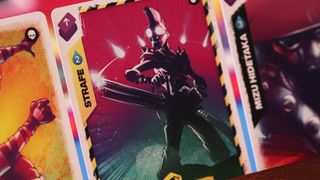
Water can also be used to draw extra cards and to take a Water Tower card, which is essentially an extra water drop you can play on a future turn. So shepherding your resources is absolutely critical. There will be far too much for you to do, and far too little to do it with.
So far, so ordinary. But Radlands kicks it up a gear by making these cards multi-use. For starters, they can sometimes come into play face-down, displaying their lurid pink backsides like a horny baboon, emblazoned with the silhouette of a punk. These provide nothing but one-hit buffers against incoming attacks, but sometimes a cheap damage sponge is the difference between victory and defeat.
They can also be discarded from your hand for a one-shot, free effect. Don’t underestimate the appealing value of “free” in a game this starved of resources. Those effects aren’t instant game-winners, but they are potential tide-turners. A chip of damage. A chance to fix one of your damaged cards. Some extra water or an extra card draw. And potentially most interesting of all, they can put into play or advance your Raiders, a universal event that, when it reaches the top of the queue, instantly damages an enemy camp even if it’s protected.
Gameplay - is it any good?
There’s not a whole lot more to Radlands than we’ve described above: the rules booklet is mercifully short and easy to understand. But the astonishing thing is how, once the cards hit the table, they blow up into a mushroom cloud of possibilities. Every paragraph of those brief rules is mined and leveraged to create the maximum amount of variety and potential.
With so much to work with and so little to make it happen, each turn becomes a shifting puzzle
Take those pink punks for example. They have an obvious function as a damage buffer, but they’re also cards in their own right, a valuable commodity in a game with such a tight economy. So if you have a Rescue Team, you can return one to your hand, gaining flexibility in exchange for the loss of protection. Or if you have a Training Camp, you can actually flip one over, potentially gaining a free recruit and saving up to four water. Their existence as cheap minions also enables other card effects and combos. No corner of how they could be used goes unexplored.
With so much to work with and so little to make it happen, each turn becomes a shifting puzzle of balancing the need to defend your own camps with the desire to attack those of the enemy. Maybe it’s best to get some people into play to set up a defensive screen, but that will leave you short of water to attack. Maybe you’re better off healing your existing cards to make them survive another turn, but that leaves you waiting to get a killer combo into play. What’s best will depend on the cards and icons at your disposal, those of your opponent, and the constant temptation to discard for the short term gain of an instant effect.
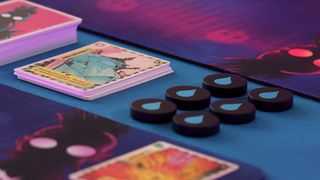
Some of the more expensive cards in Radlands seem colossally powerful, but only at first glance. The hulking, armoured brute Molgur Stang, who costs four water, lets you destroy a camp each turn, regardless of whether it’s protected. That’s a guaranteed win... if you can keep him alive. If you’re foolish enough to leave him unprotected, he can be killed instantly by a one-water Assassin. Otherwise, he’s still vulnerable to two shots from a one-water Sniper or a host of other cards that punch out damage to strip away his cover.
This is emblematic of what Radlands is: an ever-evolving arms race where you try and scrape together defences and counterattacks from whatever rag-tag army you can scrounge up at the time. Much like trying to coordinate a real post-apocalyptic force might feel like, in fact. However, there will come an inevitable moment when one player can’t grub anything up, and their game collapses, and they lose. If that happens fast or due to a bad card draw, it’s pretty frustrating, but such is the way with the random pull of cards. Just deal some more, and try again.
Overall - should you buy Radlands?
Despite a propensity for sudden, unavoidable ends, Radlands is pretty rad. It conjures both a convincing theme and a tense, tactical battle from a handful of rules and two decks of cards while remaining fast and accessible. While there are two-player card battlers around with a better sense of strategy, Radlands delivers across multiple fronts with considerable verve and style.
Matt is a freelance writer specialising in board games and tabletop. With over a decade of reviews under his belt, he has racked up credits including IGN, Dicebreaker, T3, and The Guardian.
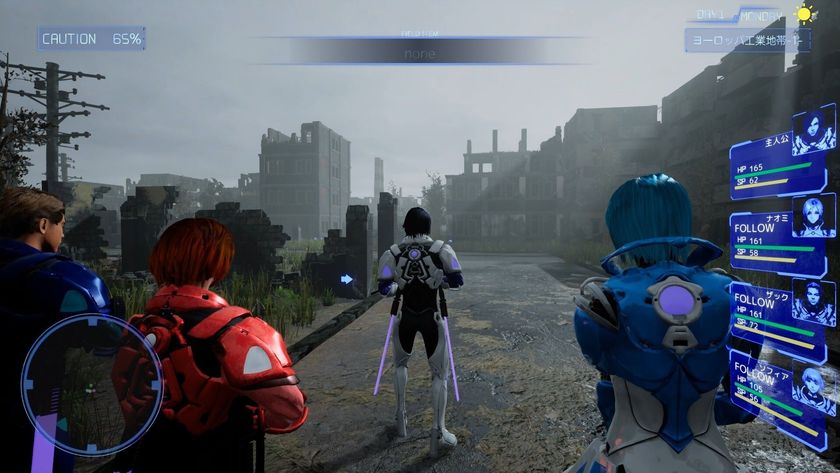
Persona and Metaphor: ReFantazio composer's new JRPG gets a Steam Next Fest demo, and it's basically a turn-based Metal Gear Solid
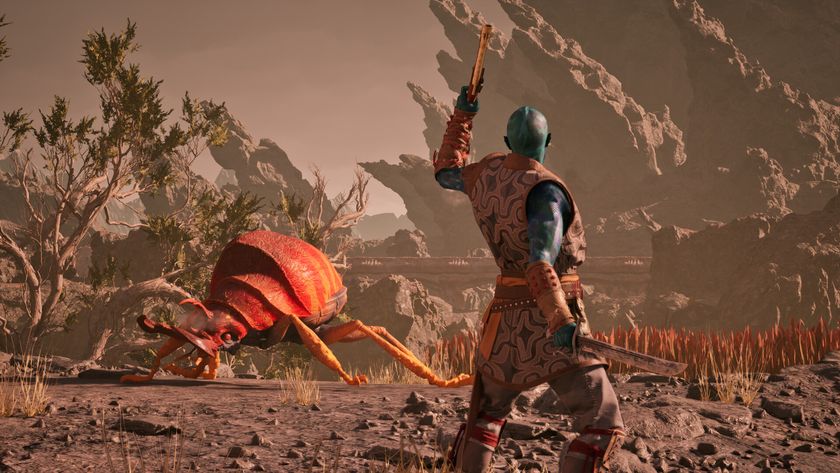
Avowed is nothing like Bethesda's RPGs, but The Elder Scrolls 6 should take inspiration from its combat
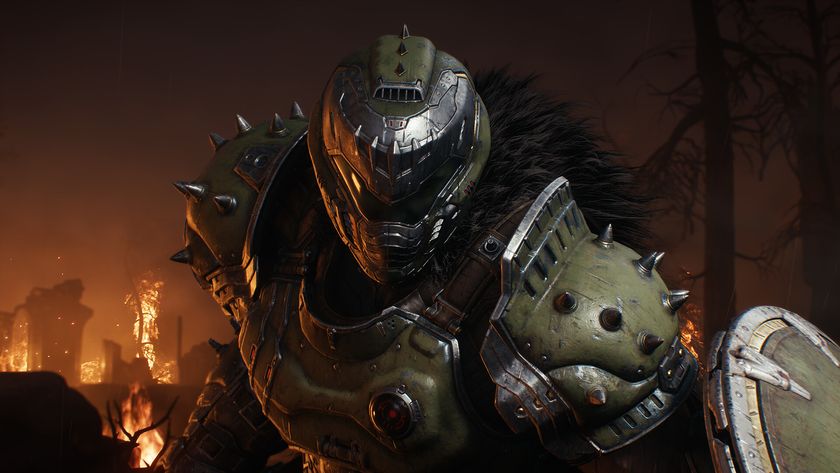
Doom: The Dark Ages developers go back to the OG 1993 FPS for inspiration: "Every time you look at it, you learn something new"
Most Popular





